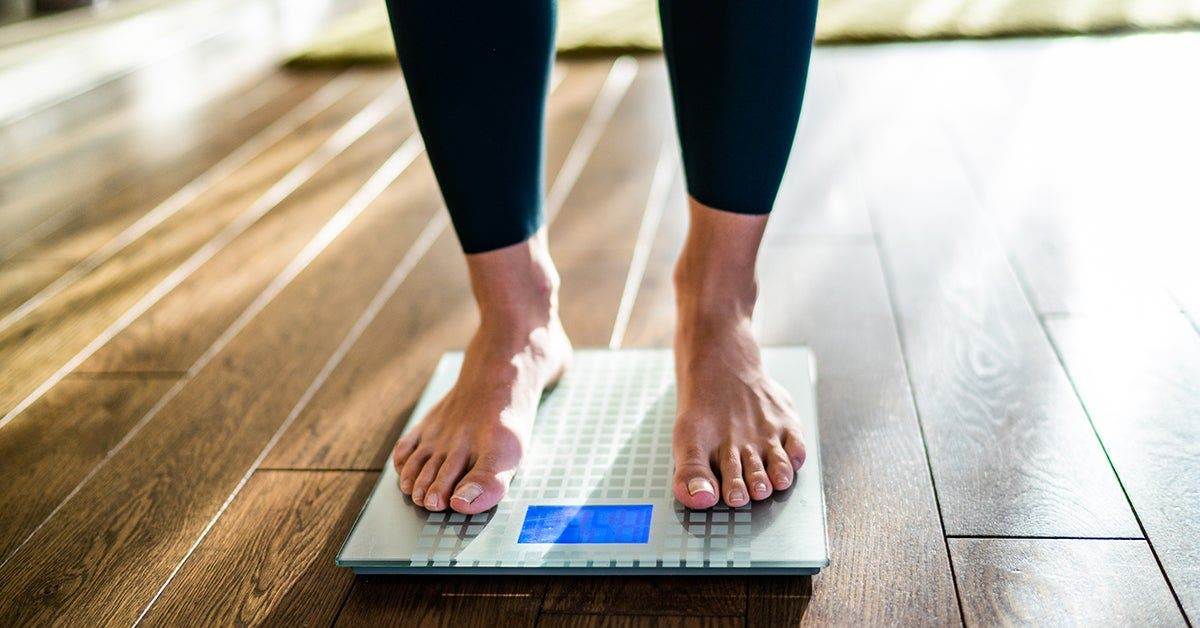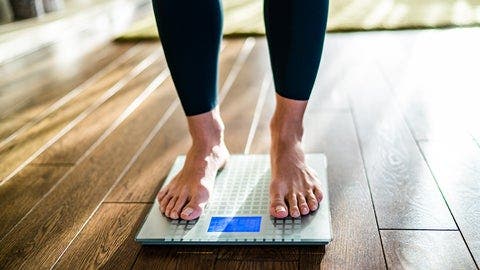How to get past a weight-loss plateau


Most people think of weight loss as one thing: a straight shot down. But that’s far from reality for most people. In fact, it’s common to have weeks where progress seems to stall, when you aren’t losing or might even gain some weight back. Sound familiar? First, know that there’s a perfectly good scientific explanation for it — and that you can push past it with the right strategies.
What is a weight-loss plateau?
There’s no strict scientific definition for a weight-loss plateau. But when someone mentions the term, they’re usually referring to a few weeks in a row when they don’t lose weight. Fortunately, weight-loss plateaus are a normal part of the journey and it’s possible to get past them.
Why do weight-loss plateaus happen?
Because weight loss isn’t a clear-cut path, there are several factors that can contribute to a weight-loss plateau.
- Lower calorie requirement. As your body loses weight, you actually need fewer calories to maintain your size — smaller bodies require less caloric energy than larger bodies. If your eating plan doesn’t adjust as you lose weight, you could reach a point of equilibrium where you end up consuming the same number of calories your body burns each day, bringing on a weight-loss plateau.
- Loss of muscle mass. “You don’t get to choose where your body loses weight first, or what kind of weight,” explains New York City-based certified strength and conditioning coach Christi Smith, MS, CSCS. When you lose weight, you’re not just losing fat — you also lose muscle mass. And since muscle tissue burns more energy than fat, losing muscle mass can reduce your metabolism.
- More relaxed eating habits. As people settle into the groove of a weight-loss plan, some healthy eating behaviors may start to slip a little — an extra snack here, a second helping there. And it can be a subtle contributor to a weight-loss plateau.
- Changes in physical activity: How much you move matters, too, and that doesn’t mean just formal workout sessions at the gym. Routine physical activity — whether you're walking to the post office, hauling groceries to the car, or puttering in the garden — also plays a role in weight management. When daily habits shift and physical activity drops off, it’s common for weight loss to slow or stall.
Can weight-loss plateaus happen with GLP-1s?
While GLP-1s do result in a pretty quick initial weight loss for most people, the pace slows down and, ultimately, does plateau — even if you’re still taking the medication. This can happen for a few reasons. For one thing, you might have hit the lowest weight you’ll reach on the medication alone and/or at the dose you are at. In research on Zepbound (tirzepatide), for example, participants on a weekly injection stopped losing weight around week 72 on average.
If you are still in the early stages of taking a GLP-1 and haven’t reached the maximum dose yet, the plateau may be due to the dose being too low and would signal to your doctor that you should continue increasing your dosage (as long as your side effects aren’t severe).
But after an extended time on the medication, it will be helping you to maintain weight, rather than continue to lose, but that does not mean the drug isn’t working anymore. If you want to continue losing, talk to a registered dietitian about lifestyle changes you could make. WeightWatchers members have access to virtual R.D. appointments, which may be covered by insurance.
10 ways to break through a weight-loss plateau
Will a weight-loss plateau go away on its own? The answer is probably not. Hitting a plateau could mean that you’d benefit from making some simple adjustments. A good weight-loss plan remains flexible as your body changes and your life circumstances shift. Here are some tips for staying on track toward your goal.
- Track your foods
People tend to underestimate how much they actually eat, research shows. Measuring portions and tracking what you eat eliminate the guesswork that can lead to a weight-loss plateau. If needed, reset some of the habits you developed in the beginning of your weight-loss plan: Stick to appropriate serving sizes, keep a record of what you’re eating and drinking, and put together a meal plan for the days ahead. - Go big on fruits and veggies
Remember how the body’s daily energy requirement goes down with weight loss? Fresh produce can be helpful for powering through a related plateau. Non-starchy vegetables — such as cauliflower, broccoli, beets, asparagus, and leafy greens — are not only low in calories; they also deliver fiber to keep you satisfied. - Drink more water
Sipping plain H2O instead of juice, soda, or sweet tea is a simple way to reduce excess calories, which can support weight loss efforts. - Switch up your workout routine.
It’s OK if you don’t feel like training for a marathon or logging hours on an elliptical machine right now. But if your current exercise plan is starting to feel easy, find a more challenging set of moves or try a new class to help rev up your calorie burn, suggests Smith. - Sneak in more movement
Look for simple ways to move more during the day. Try walking the dog for an extra fifteen minutes, or do a quick, upper-body workout at your desk. Bonus: “Resistance moves help build muscle tissue, which burns more calories, and can help minimize declines in metabolic rate,” says Smith. - Make sure you’re getting enough sleep
Studies link not getting enough quality shut eye to an increased appetite and a sluggish metabolism — both of which can contribute to a weight-loss plateau. - Manage stress
Deadlines at work, a fender bender at school drop-off, a tough conversation — stress happens. And when it does, your body releases the hormone cortisol to regulate its physical response which can, in turn, impact weight loss. Research shows acute stress may increase appetite or lead to stress eating while chronic stress can contribute to metabolic dysfunction and weight gain — typically as belly fat. Finding healthy ways to unwind can ease the effects of acute stress and help you move past a weight-loss plateau. - Be patient
Not because your weight-loss plateau will go away on its own, but because it takes time to see lasting progress when you’re trying to lose weight. Have confidence in the healthy choices you’re making, and look to others for support if you need a nudge to keep going. - Be mindful of non-scale victories
While weighing yourself regularly can help you track progress, remember that your journey isn’t just about numbers. Other victories — like getting better sleep, drinking more water, building muscle with a strength-training program, and just having more energy to get through your busy days — can be just as motivating. Plus, they’re important signs of progress. Celebrate them and keep moving forward. - Keep weighing yourself
A study published in the journal Obesity shows that the most successful WeightWatchers members weigh themselves frequently — weekly or even daily. Weigh yourself on the same scale at the same time, ideally first thing in the morning before eating, after using the bathroom, and with no clothes on, and you’ll be able to see minor changes and trends, as well as long-term progress toward your weight loss goal.
The bottom line
It can be frustrating to step on the scale and see the same number pop up each time, but the good news is you won’t be stuck at a weight-loss plateau forever. Be consistent with your healthy habits, and continue to track your weight. Pretty soon, that weight-loss plateau will be behind you.
https://www.usgs.gov/special-topics/water-science-school/science/water-you-water-and-human-body
https://pubmed.ncbi.nlm.nih.gov/26612768/
https://www.ncbi.nlm.nih.gov/pmc/articles/PMC524030/
https://pubmed.ncbi.nlm.nih.gov/16950139/
https://pubmed.ncbi.nlm.nih.gov/26883880/
https://pubmed.ncbi.nlm.nih.gov/25893719/
https://pubmed.ncbi.nlm.nih.gov/32527625/
https://pubmed.ncbi.nlm.nih.gov/18984030/
https://www.ncbi.nlm.nih.gov/pmc/articles/PMC3630273/#R29
https://pubmed.ncbi.nlm.nih.gov/31970912
